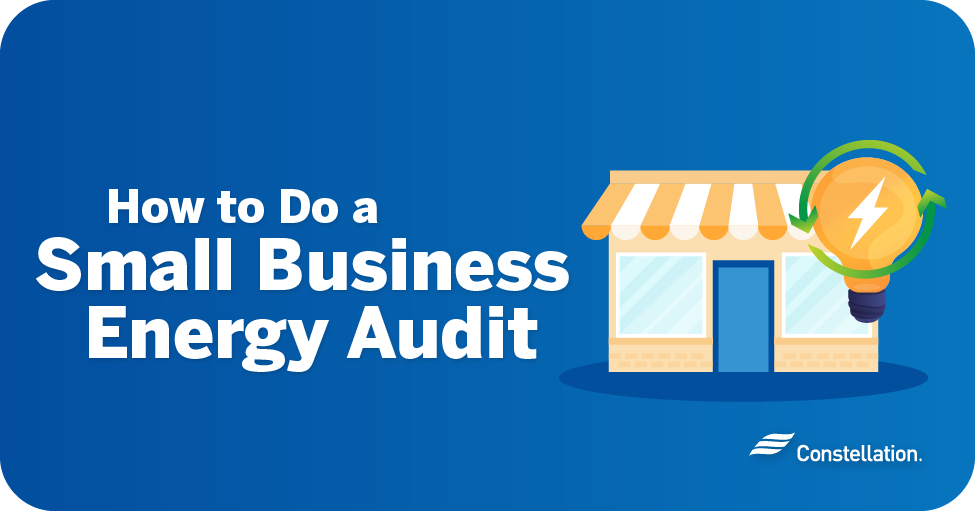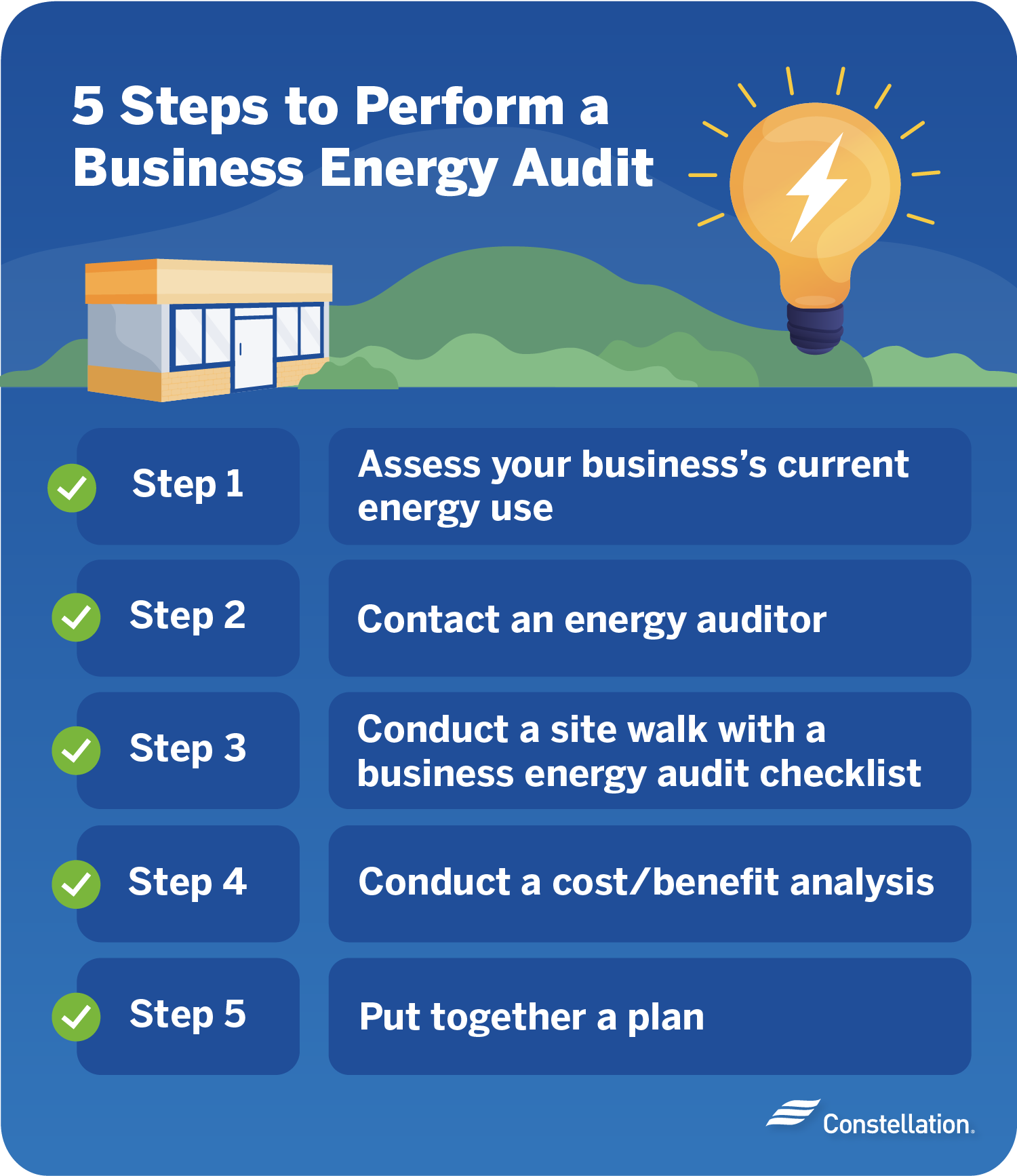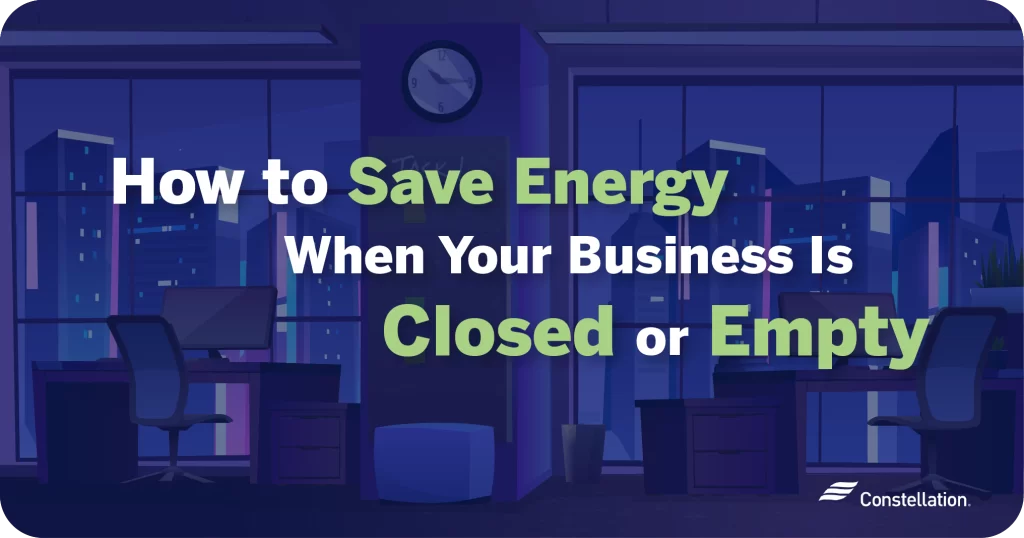
- Category:
Small Business Energy Savings -
Last updated:
October 14, 2022
How to Do a Small Business Energy Audit
What is a business energy audit?
Putting a business energy audit on your agenda in the coming year makes sense. Wasting energy is costly and is a major expense for many small businesses, especially as prices climb. It also has a steep environmental cost.
Making minor behavior changes and putting a few dollars into upgrading your facilities and equipment can cut that waste. But where to begin? Where should you concentrate your efforts? Where will the payback be the greatest?
That is where a business energy audit comes in. Taking a comprehensive and structured look into how your business uses energy can answer those questions.
How much a business energy audit costs
In talking about how much a business energy audit costs, it can vary tremendously. They range from less than $1,000 to over $15,000. That wide range in costs is due to the many factors that can affect it.
- Size of the business building/facility. The bigger your facility, the longer it will take to survey it.
- Type of business. A large manufacturing or processing business will have more energy-using equipment to evaluate than an insurance agency.
- Type of energy audit. Your audit could include multiple structures, a wide variety of equipment, layout issues and a complete outside and inside assessment.
- Level of energy audit. You can do a basic level audit with a quick walk-through of your facility, or you can do a detailed inspection, taking measurements and readings and assessing the ROI of each recommendation.
- Available documentation. If you have complete billing, maintenance records and electricity usage history, auditors will not have to do as much research and the cost of the audit will be lower.
How to do a small business energy audit

Learning how to do a business energy audit will help you decide the best approach for your company. By understanding the process and the benefits of a business energy audit, you can make a decision that will best balance costs and return on investment.
Step 1: Assess and understand your business’s current energy use
The core of any business energy audit comes down to understanding your energy costs. Deciding if an upgrade is worth making depends on how much you can save. To do that, you have to know how much you are spending. Begin by establishing that baseline. If you can’t document costs, you can estimate your business’s electricity cost.
Step 2: Contact an energy auditor
Finding a qualified professional at a price you can afford is a process. Start by asking people you trust for their recommendations. Your power company may offer this service or will have recommended resources. Constellation Energy is one company that does offer this service. Review candidate capabilities and certifications. Ask for sample reports. Consider issuing a request for proposals so that you can easily compare your options.
Step 3: Conduct a site walk around with a business energy audit checklist
The next step when it comes to how to do a business energy audit is to conduct a walk-through of your property, inside and out. You should consider lighting, heating and air conditioning, along with equipment and machinery. It may be advisable to choose energy-efficient equipment for your office. Examine your building, too, assessing insulation, doors and windows.
Just as important as looking at the physical systems is to assess habits. Are lights left on? Are thermostats improperly set? Do people leave doors open and equipment on? You can take this opportunity to learn about how to reduce your business’s peak demand charges. Changing habits can be a highly effective and inexpensive way to lower your small businesses electricity bill.
Step 4: Conduct a cost/benefit analysis
Following the inspection and survey, you will have a solid list of issues and recommendations for resolving them. Conducting a cost/benefit analysis will help you understand which ones will give you the biggest energy savings for the effort. You will likely find fast, easy, cheap fixes, however, some might require a sizable capital investment. The analysis will help you plan and prioritize these outlays.
Step 5: Put together a plan
Given the many benefits of a business energy audit, knowing how to do an energy audit and then taking the results and analysis in hand, you are ready to make a plan of action. Your plan will include the fast fixes you identified in earlier steps and will include the steps necessary to finance and complete bigger projects. The plan is not complete if it does not also include ways to change habits and behaviors. You may wish to also investigate and choose a different small business energy option.
Saving energy, improving productivity and benefiting the environment are why a business energy audit is important — so important that it isn’t a one-time activity. Your business changes along with the energy markets. After your first audit and after completing energy-saving investments, you will want to check progress. For these reasons, scheduling regular energy audits, usually every other year, should be part of your plan.
How your business benefits from an energy audit
Conducting an energy audit is an efficient way to identify ways to save energy and boost productivity. You will know what costs you can cut and how much to invest to achieve those savings so you can prioritize your projects. A key part of the energy audit should include investigating the right energy choice for your business.




